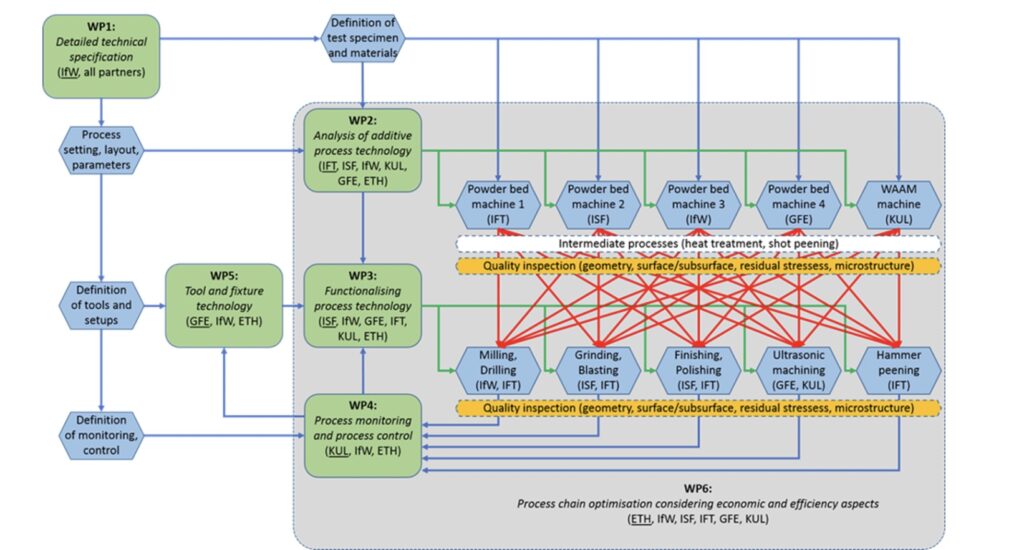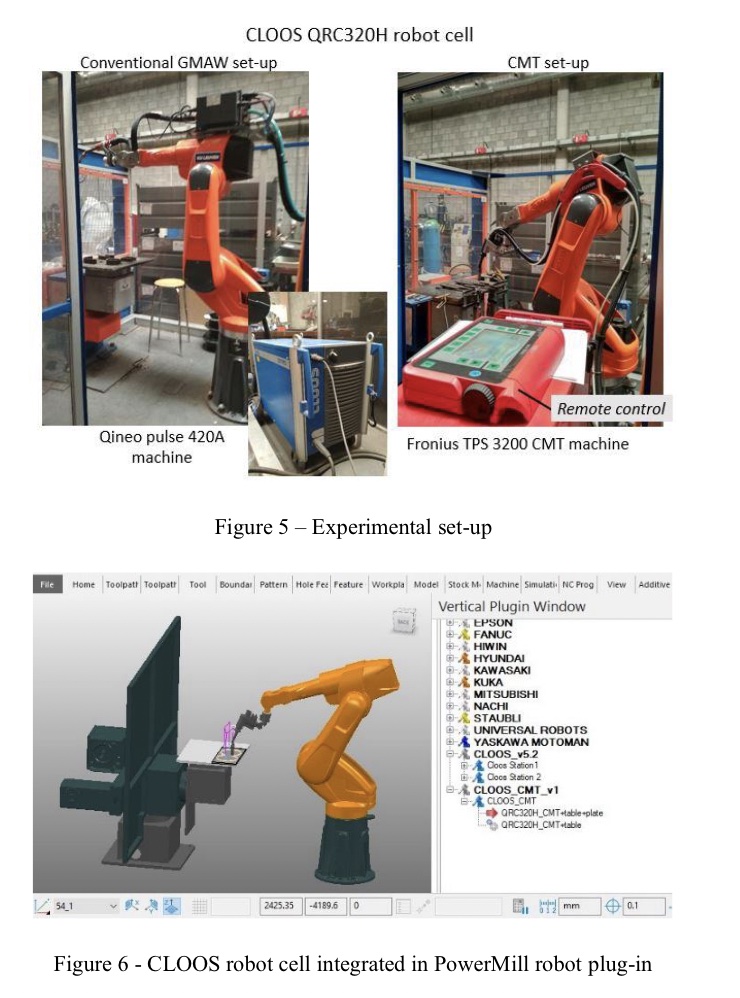As many in the additive manufacturing (AM) industry know, 3D printing alone often doesn’t cut it and can be best combined with subtractive processes to finish parts. For many applications, hybrid process chains such as these will become the path to end use parts. A recent industry project, dubbed “Advanced Processing of Additively Manufactured Parts (Ad-Proc-Add),” looked in depth at additive-subtractive process chains with the goal of more cost-effective and more hybrid process chain implementations.
The project was led by Forschungskuratorium Maschinenbau e.V. (FKM) together with the Institute for Machine Tools (IfW) of the University of Stuttgart and included KU Leuven, Inspire AG, Institute of Machining Technology (ISF), TU Dortmund University, Sirris, ETH Zurich with funding from the German, Swiss, Flemish and Austrian governments. The aim of the project was to see how settings affected part properties throughout the process chain. The results lead to more clarity on getting metal components made, better post processing practices, insight into better quality assurance (QA) and greater knowledge about monitoring which can now be shared. You can download the findings here.
“Due to the exceptional collaboration with our industrial partners and under the excellent guidance of FKM and IfW, we not only achieved the ambitious goals of the research project, but also produced industrially relevant and applicable results,” said Benjamin Losert, ecoplus project manager of the Mechatronics-Cluster.
Some of the research to emerge from this project included how wire arc additive manufacturing components can be machined. The team there came up with a formula that one could use to see how the settings during the 3D printing welding step and the milling parameters collectively affects surface roughness. The amount of heat put into a part and the effects this has on post-processing was also looked explored. In this paper, researchers examined the impact of laser powder bed fusion (LPBF) settings on the post-processing of bores, while another saw a team investigate LPBF settings and drilling. In this paper, the authors looked at weakening LPBF components at certain points to make post-processing easier. This one delves into adopting additive versions of gas metal arc welding and cold metal transfer welding.
All in all, this is valuable work. The Cornet project is quite immense in scope and scale. A lot of research seems focused on a perennial need to qualify a particular material for PBF over and over again, but this is exactly the type of thing that would require a lot of different researchers, a lot of different expertises and interests and a lot of time. By deploying lots of universities across four countries a lot of research can be coordinated and parallelized into a cohesive effort. In additive especially this has considerable benefits. A lot of times people consider settings, parameters and process knowledge to be proprietary. Due to this a lot of time has been spent with people reinventing the wheel. We don’t share knowledge, especially in depth process related knowledge and this really slows us down. In our tip of the Iceberg series we point to this being one of the main things slowing down the adoption of Additive. Especially in taking a gander at WAAM and other relatively newly hot 3D printing technologies an early collective start in understanding the interplay and feedback loops in parameters and their effects is a real force multiplier for the entire industry.
Subscribe to Our Email Newsletter
Stay up-to-date on all the latest news from the 3D printing industry and receive information and offers from third party vendors.
You May Also Like
Creality Begins Selling HALOT-MAGE S: Setting New Standards in Precision 3D Printing
Creality, a leading innovator in consumer-grade 3D printing technology, proudly introduces the HALOT-MAGE S, the latest breakthrough in high-resolution 3D printing. With its cutting-edge features and user-centric design, the HALOT-MAGE...
Farsoon Showcases Comprehensive 3D Printing Solutions, Automation, and More at TCT Asia
This year’s TCT Asia event showcased just how much the Asian additive manufacturing (AM) market has grown, with Eplus3D’s 64-laser metal 3D printer alone acting as a synecdoche for China’s...
Creality Launches Ender-3 V3 Plus: Bigger CoreXZ for Unprecedented Performance
Embracing a journey of innovation and excellence, Creality’s Ender-3 series has established a distinguished path in the field of 3D printing. From the entry-level Ender-3 V3 SE to the feature-rich...
Laser Wars: Eplus3D Unveils Metal 3D Printer with up to 64 Lasers
Now that the laser wars in the powder bed fusion (PBF) space have, for the most part, moved to China, original equipment manufacturers (OEMs) there are in fierce competition. Eplus3D...


































